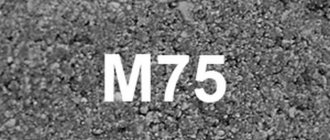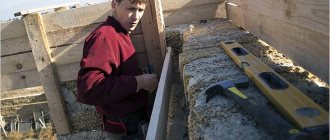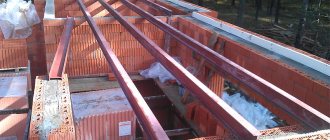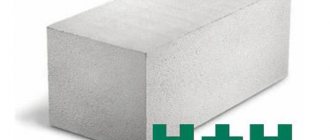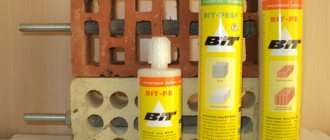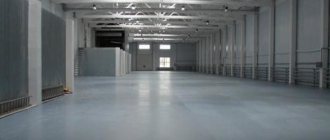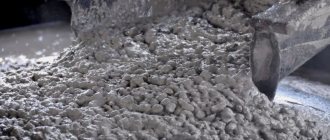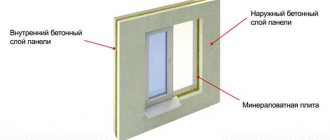A new solution in the field of architectural concrete production is Kevlar concrete technology. This material has a glossy surface that imitates the coating of artificial or natural stones or a marble pattern. It is produced by gravity mixing in a special concrete mixer. The product has a rigid frame made of grains with fractions up to 5 mm, which provide additional strength, prevent cracking and help eliminate air bubbles from the mixture.
Kevlar concrete is also called ultraconcrete, granite or pelletized concrete.
Composition of building materials
The set of initial components and forms between heavy concrete with marble chips and Kevlar concrete is the same. The difference lies in the preparatory stage before pouring into molds. During the production process, concrete pellets are obtained, which adhere to granite screenings. These are balls, inside of which grains of sand, different fractions of screenings and Portland cement are tightly interlocked with a core in the middle. After the pellets are unloaded into plastic molds, under the action of a resonator, all microparticles flow into a single mixture - a monolith of the desired type. And large particles of Kevlar concrete merge into a rigid lattice skeleton, which affects the properties of concrete, increasing its resistance to fracture and compression. The pellet consists of the following elements:
- screening grain with dimensions up to 5 mm (kernel);
- small inclusions of grains;
- dense conglomerate - sand, cement, various small microparticles up to 3 mm.
During production, you must first obtain special pellets.
As with any concrete test, Kevlar concrete contains:
- mineral coarse filler with clay inclusions up to 3%;
- granite screenings of various fractions, crushed stone or screenings of dolomite, basalt;
- fine sand;
- Portland cement grade not lower than M400 and without additives;
- plasticizer to accelerate the hardening of pellets (S-3 or SP-1);
- pigments for coloring;
- mixing water (mass fraction of water 17%).
What does this mixture consist of?
The instructions for making granite recommend using the following ingredients:
- Portland cement M500 DO and M400 DO are used as a binder. DO marking means that the cement does not contain active mineral additives (D-additives, O-absence).
For your information! When cutting reinforced concrete with diamond wheels, the equipment used can also be used on Kevlar concrete. Diamond in general is a universal material; the fastest way to make a “hole” is to use diamond drilling of holes in concrete.
- Mineral aggregates: River sand, quarry sand, with a fineness modulus in the range of 1.8-2.5 with clay or silt inclusions not exceeding 3%. Under no circumstances purchase cheap fillers that will degrade the quality of slabs and products.
- Granite crushed stone for concrete with a fraction of 2-5 or granots of various fractions from 0 to 5. Screenings of other rocks are also used - dolomite, quartzite and basalt.
Advice! The choice of screening fraction depends on the dimensions of the ultra-concrete product. The particle size of the mineral filler should be three times smaller than the thickness of the product.
- Plasticizers and hardening accelerators significantly speed up and optimize the process of hardening and forming products from pellets.
- Iron oxide pigments (dyes) for tinting ultra-concrete.
Add a little color - get rid of the gloomy gray that cement has (pictured)
The price of products made from the material described above depends on the quantity and brand of ingredients involved in the production. On average, the cost of the finished product, taking into account all costs (hired labor, payment for energy resources) will be about 20-30 rubles per kg.
Overview of the characteristics and properties of Kevlar concrete
This type of material is much more frost-resistant than all other mixtures.
Kevlar has a strength grade of at least M600 (class B45), which means that the material is capable of withstanding a compressive load of 600 kgf/cm2. The frost resistance class of Kevlar concrete is F700, where the numerical value is cycles of alternating freezing and thawing without reducing its tensile strength by more than 5%. For comparison, most simple concretes have a frost resistance of F50-F150.
The surface of Kevlar is glossy and smooth to the touch, its secret lies in the water-cement ratio of the materials. Water saturation of kevral concrete is 0.5% with a possible acceptable level of 5%. When exposed to water and snow, the building material has almost zero slip. Light-resistant iron oxide pigments paint the product in any desired color and their consumption is at least 2 times less than when painting conventional grades of concrete. With the help of such paints, the entire solution is not completely painted over, creating stains simulating natural stone.
Compared to conventional concrete products produced using the vibration casting process, products made from pelletized concrete are better in quality, with high decorative properties and physical and chemical properties.
Ultraconcrete is one of the methods of vibratory concrete casting technology
Those who have decided to start a profitable business producing concrete products first of all pay attention to which technology for obtaining the product to choose.
You will need knowledge on organizing production and optimal promotion when selling goods. The production enterprise Zavod Form is ready to help you study Ultraconcrete technology inexpensively. The company has been successfully developing and producing popular products in the construction materials and light machine tool markets for more than ten years. This time has become a period of development of all technological processes in the field of concrete production of artificial stone; vast experience has been accumulated, which the company shares with everyone who is just starting or trying to improve an already operating enterprise.
You will be able not only to learn from experience, gain know-how, learn how to create Ultra Concrete with your own hands, train workers to do this, but also select the necessary equipment and molds for the production of artificial stone.
Technology for the production of building materials using the gravity clumping method
When making such material, you need to use a vibrating table.
You can make concrete with Kevlar with your own hands, knowing the technology and tools. In addition to producing concrete for your own needs, it is quite possible to start producing kevral concrete as a business. The main equipment is a concrete mixer and a vibrating machine. Sewerage and drainage are not needed. The investment will pay off within a month of production. To do this you will need the following equipment:
- gravity type concrete mixer;
- mixture components;
- scales;
- shovel;
- vibrating table;
- polyethylene film;
- forms.
The production technology of Kevlar concrete is carried out according to the following scheme:
When the pigment is added to the composition, you can fill the form with it.
- Kneading the mixture. Dry components are poured and mixed in a concrete mixer for no more than 1 minute.
- Adding cement. Add Portland cement and knead for another 1 minute.
- Compliance with proportions, adding plasticizer. In cement paste, the movement of parts is slow in some places, so a plasticizer is added to ensure uniform mixing. It is diluted in hot water, stirring constantly so that it does not crystallize.
- Inspection of pellets. Beads are selectively selected and broken to assess their internal composition. The conclusion about the readiness of the mixture is made by the diameter and density of the pellet body.
- Input of pigments. Once the final shape of the pellets is accepted, paint is added, which is applied only to the top layer of Kevlar, thereby reducing the consumption of pigments. The paint is added dry and in small parts and mixed for no more than 10 seconds.
- Loading raw materials into plastic forms. When the molds are filled to 80%, the vibrating tables are turned on, after which they add more until the mold is completely filled and covered with thick plastic film. Drying occurs within 24 hours. After stripping, the products must rest for 5 days.
Equipment for Ultraconcrete technology
People and their high qualifications have always been and remain the basis of any successful business. But they need to be provided with reliable and easy-to-use equipment. When you have already decided to buy Ultra Concrete technology, then in addition to knowledge and skills, the plant can also offer you simple, reliable and affordable machines for concrete production.
The models that were developed and created at the Form Factory received a good rating not only from domestic but also from foreign buyers. Now the company is proud of such achievements, because they were designed by the enterprise during the difficult years of the general decline of the engineering industry in the country. The company produces a full range of machines and mechanisms for concrete products:
- two types of vibrating screens and drum-type separators for cleaning bulk materials;
- a wide variety of models of concrete mixing units, which differ in design and methods of application;
- vibration platforms of various types and load-carrying capacity with horizontal and vertical vibration directions;
- machines for the production of heat blocks with various configurations;
- vacuum forming machines for those who decide to independently produce plastic molds for various applications.
In addition to producing machines, the company tests them in different operating modes with increased load in order to adapt them to the harsh conditions of domestic concrete production.
This is done to achieve the required high quality of the equipment being created. Ultraconcrete technology involves acquiring skills in vibratory casting of concrete products. You can acquire these skills at the Mold Factory facilities. The process is not particularly difficult and workers who have undergone a short training will be able to cope with vibration casting techniques.
- The technology uses traditional mineral fillers - sand and granite screenings. They are thoroughly cleaned using available types of construction sieves.
- When producing concrete mortar using Ultraconcrete technology, in addition to the mentioned mineral fillers, a plasticizer is added to quickly gain concrete strength (100 g per 10 kg of cement), and when the product is required to be painted, a coloring pigment of the required color is used.
- To ensure the necessary compaction of concrete in forms for pouring, various types of vibrating platforms with the required load capacity are used. Rather, the concrete mixture is not poured into them, but is laid out, which presents spherical formations. This process reflects the features and techniques of Ultra Concrete from Mold Factory.
- The plasticizer helps the concrete mixture quickly gain strength, and experts recommend demoulding the product after 18 hours.
- Already six days after pouring, it becomes possible to begin installation of the resulting concrete product.
This is what the vibration casting technology looks like, without going into some of the specifics that you will be taught at the Mold Factory when purchasing the course.
It can be noted that other techniques implement a similar pattern of vibration casting technology. Let us repeat: you can learn all these specific features at the facilities of the Mold Factory production enterprise with the acquisition of skills and all the know-how of casting using Ultraconcrete methods. You will be able to open production yourself using a ready-made and factory-tested program.
Application area of Kevlar concrete with smooth surface
The main application is cladding and finishing. Pelletized concrete is used for the manufacture of the following elements, objects and structures:
- tiles for laying sidewalks;
- fences and hedge elements;
- curbs along paths;
- fireplaces;
- flower beds;
- facade stone;
- elements of landscape architecture;
- steps.
You can make beautiful steps from this material.
The material is suitable for the manufacture of facade stone.
The characteristics of Kevlar concrete in terms of frost resistance, abrasion and moisture resistance, resistance to chloride penetration and gas resistance make it in demand and popular in the design of facades, playgrounds for children, architectural and decorative elements of buildings and structures. The most important advantage of this technology is the use of common, inexpensive components.
Conclusion
Everyone who has mastered the production of pellet products using the technology described above with their own hands speaks of it as affordable, extremely profitable and quickly pays for itself (as regards equipment).
The only thing you need to understand is that there is some complexity in the workflow, so it is better to familiarize yourself with the regulatory requirements in advance. At least in order to select the correct composition of the mixture - if the technology is followed, Kevlar concrete will be strong and durable.
In the videos presented in this article you will find additional information on this topic.
